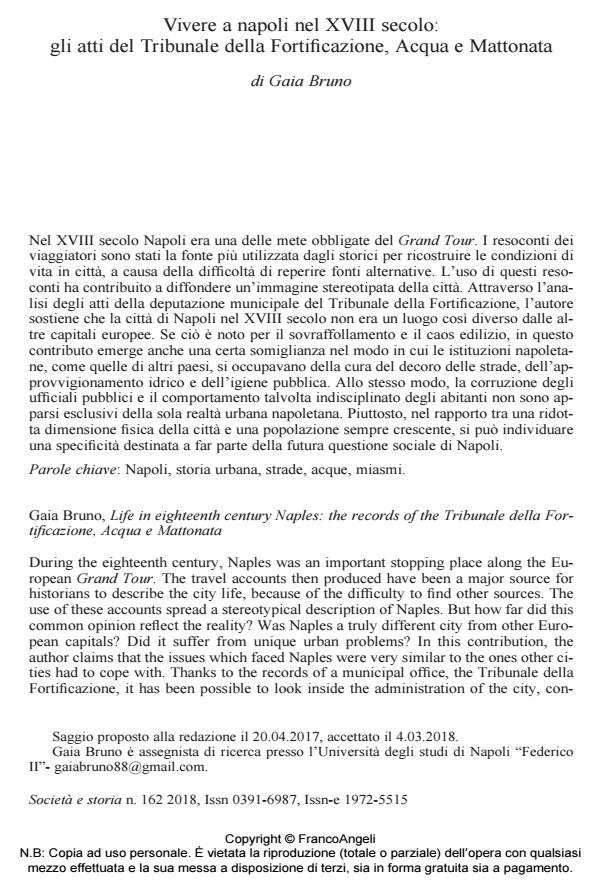Life in eighteenth century Naples: the records of the Tribunale della Fortificazione, Acqua e Mattonata
Journal title SOCIETÀ E STORIA
Author/s Gaia Bruno
Publishing Year 2018 Issue 2018/162
Language Italian Pages 33 P. 689-721 File size 205 KB
DOI 10.3280/SS2018-162002
DOI is like a bar code for intellectual property: to have more infomation
click here
Below, you can see the article first page
If you want to buy this article in PDF format, you can do it, following the instructions to buy download credits

FrancoAngeli is member of Publishers International Linking Association, Inc (PILA), a not-for-profit association which run the CrossRef service enabling links to and from online scholarly content.
During the eighteenth century, Naples was an important stopping place along the European Grand Tour. The travel accounts then produced have been a major source for historians to describe the city life, because of the difficulty to find other sources. The use of these accounts spread a stereotypical description of Naples. But how far did this common opinion reflect the reality? Was Naples a truly different city from other European capitals? Did it suffer from unique urban problems? In this contribution, the author claims that the issues which faced Naples were very similar to the ones other cities had to cope with. Thanks to the records of a municipal office, the Tribunale della Fortificazione, it has been possible to look inside the administration of the city, con cerning e.g. the care for paving streets, for water supply, for public hygiene. At the same time, a certain amount of corruption among public officers and the behaviour of inhabitants had not turned out to be a peculiarity of Naples. Instead, a distinctive trait can be found in the relationship between the geographical narrow shape of the city and its ever-growing population that appears already as part of the social condition of the city, a handicap destined to become worse and worse with the passing of time.
Keywords: Naples, Urban History, streets, water, smell.
- Quale storia della società? Uno sguardo sull'epoca moderna Paola Bianchi, in SOCIETÀ E STORIA 178/2023 pp.711
DOI: 10.3280/SS2022-178005 - “Cool and tasty waters”: managing Naples’s water supply, c. 1500–c. 1750 David Gentilcore, in Water History /2019 pp.125
DOI: 10.1007/s12685-019-00234-3
Gaia Bruno, Vivere a napoli nel XVIII secolo: gli atti del Tribunale della Fortificazione, Acqua e Mattonata in "SOCIETÀ E STORIA " 162/2018, pp 689-721, DOI: 10.3280/SS2018-162002